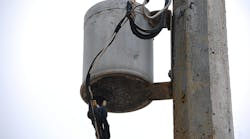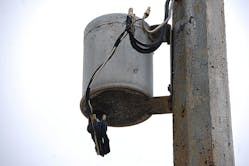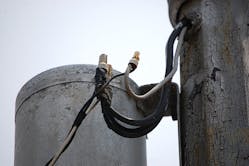How well do you know the Code? Think you can spot violations the original installer either ignored or couldn't identify? Here's your chance to moonlight as an electrical inspector and second-guess someone else's work from the safety of your living room or office. It's your turn to identify the violation.
Hint: Underachievement overexposed
Find the Answer
The wire connectors used for splicing the wires for this remotely mounted ballast are not rated for this outdoor environment. Section 110.3(B) requires equipment to be used in accordance with the instructions included in the listing or labeling of the equipment. This installer apparently did not read the instructions for the wire connectors. The moisture and sunlight have caused them to split open and compromise the safety of this installation.
According to Sec. 110.11, no conductors or equipment may be used in damp or wet locations — or where exposed to other agents that have a deteriorating effect on the conductors or equipment unless they are identified for use in that operating environment. Wet location wire connectors are readily available.
As for the conductors themselves, Sec. 310.10(C) requires conductors rated for use in a wet location to be used. Where exposed to sunlight, Sec. 310.10(D) requires insulated conductors to be listed as sunlight resistant or be covered with tape or a sleeve that is listed as being sunlight resistant.
These damaged connections could pose a real shock hazard to an unsuspecting electrician who needs to troubleshoot or service this luminaire.






